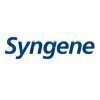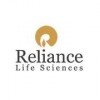
i
SAI Life Sciences
Filter interviews by
SAI Life Sciences Senior Research Chemist Interview Questions, Process, and Tips
SAI Life Sciences Senior Research Chemist Interview Experiences
2 interviews found
I applied via Walk-in and was interviewed in Jun 2024. There was 1 interview round.
(6 Questions)
- Q1. What is NBS structure
- Ans.
NBS (N-bromosuccinimide) is a chemical compound used as a brominating agent in organic chemistry.
NBS is a white crystalline solid
It is commonly used in organic synthesis to selectively brominate allylic and benzylic positions
NBS is often used in conjunction with a radical initiator like AIBN to generate bromine radicals
- Q2. What is pyridine structure
- Ans.
Pyridine is a heterocyclic aromatic compound with a six-membered ring containing five carbon atoms and one nitrogen atom.
Pyridine has a molecular formula of C5H5N
It is a colorless liquid with a strong odor similar to fish
Pyridine is commonly used as a solvent and precursor in organic synthesis
- Q3. 3 bromo pyridine
- Q4. Adding in n-buli nd dmf how to convertion
- Ans.
n-Buli and DMF can be used to convert certain functional groups through deprotonation and subsequent reactions.
n-Buli is a strong base commonly used for deprotonation reactions.
DMF (dimethylformamide) is a polar aprotic solvent that can facilitate reactions.
The combination of n-Buli and DMF can be used to convert certain functional groups such as alkyl halides to alkyl lithium compounds.
Care must be taken when handling
- Q5. Aldehyde to wittig reagent how to convertion
- Ans.
Aldehydes can be converted to Wittig reagents through a two-step process involving the formation of a phosphonium ylide.
React aldehyde with a phosphonium salt to form a phosphonium ylide
React the phosphonium ylide with an appropriate carbonyl compound to form the Wittig reagent
The Wittig reagent can then be used in a Wittig reaction to form an alkene product
Example: Conversion of benzaldehyde to benzylidene triphenylph
- Q6. I workingin scheme
Interview Preparation Tips
- I will prepared scheme
- Acid amine coupling
- N-alkylation
- Oxidation
- Reductions
- Convertions
- H-nmr
Respected medam nd sir,
I confidentially working in mg to gr scale . identify the any solved the reactions, identify the any kind of interpretation data nd different kind of library molecules has handling nd delivered projects
I applied via Referral and was interviewed in Dec 2020. There were 3 interview rounds.
Interview Questionnaire
2 Questions
- Q1. Regarding job
- Q2. Interview was very nice
Interview Preparation Tips
Thank you your support
Top trending discussions






Interview questions from similar companies

Senior Research Chemist Interview Questions & Answers
Aragen Life Sciencesposted on 23 Mar 2025
Interview Questionnaire
2 Questions
- Q1. What is forced degradation and why we have to perform
- Q2. How u will start the development procedure in HPLC
- Ans.
Initiate HPLC development by defining objectives, selecting columns, and optimizing conditions for effective separation.
Define the objective: Determine the purpose of the analysis, e.g., purity testing or quantification.
Select the appropriate column: Choose based on the chemical properties of the analytes, e.g., C18 for non-polar compounds.
Optimize mobile phase: Experiment with different solvents and pH levels to impro...

Research Associate Interview Questions & Answers
Aragen Life Sciencesposted on 9 Jan 2021
Interview Questionnaire
1 Question
- Q1. Reterosynthesis, rearrangements, conversions, naming reactions, NMR, purification techniques

Senior Research Associate Interview Questions & Answers
Aragen Life Sciencesposted on 22 Jan 2021
Interview Questionnaire
2 Questions
- Q1. What about working in previous organization.
- Q2. FT and PO others..

Research Associate Interview Questions & Answers
Aragen Life Sciencesposted on 21 May 2021
I applied via Referral and was interviewed in Nov 2020. There was 1 interview round.
Interview Questionnaire
1 Question
- Q1. What are H1NMR values? Types of reactions? Explain NMR?
- Ans.
H1NMR values are chemical shifts observed in nuclear magnetic resonance spectroscopy. NMR is a technique used to study the structure and properties of molecules.
H1NMR values refer to the chemical shifts observed in proton nuclear magnetic resonance spectroscopy.
NMR is a powerful analytical technique used to study the structure, dynamics, and properties of molecules.
It involves the interaction of atomic nuclei with a st...
Interview Preparation Tips

Research Associate Interview Questions & Answers
Aragen Life Sciencesposted on 8 Jul 2021
Interview Questionnaire
3 Questions
- Q1. About sfc purification
- Q2. Nmr spectroscopy
- Q3. Ir spectroscopy

Research Associate Interview Questions & Answers
Aragen Life Sciencesposted on 2 Mar 2022
I applied via Naukri.com and was interviewed before Mar 2021. There were 2 interview rounds.

(1 Question)
- Q1. All the basic concepts
Interview Preparation Tips

I applied via Naukri.com and was interviewed before Sep 2021. There were 3 interview rounds.

(1 Question)
- Q1. Name reactions, quenching pyrophoric reagents, NMR spectroscopy. Oxidation reagents, reduction reagents.
(1 Question)
- Q1. Why you are changing? Salary expectation? Ready to relocate? If given offer you will join?
Interview Preparation Tips
Definitely you will succeed 🤗

Research Scientist Interview Questions & Answers
Syngene Internationalposted on 9 Aug 2021
I applied via Campus Placement and was interviewed in Jul 2021. There was 1 interview round.
Interview Questionnaire
1 Question
- Q1. Research working
Interview Preparation Tips
SAI Life Sciences Interview FAQs
Tell us how to improve this page.
SAI Life Sciences Interviews By Designations
- SAI Life Sciences Executive Interview Questions
- SAI Life Sciences Research Chemist Interview Questions
- SAI Life Sciences Senior Executive Interview Questions
- SAI Life Sciences Assistant Manager Interview Questions
- SAI Life Sciences Senior Research Associate Interview Questions
- SAI Life Sciences Executive Production Interview Questions
- SAI Life Sciences Research Associate Interview Questions
- SAI Life Sciences Research Assistant Interview Questions
- Show more
Interview Questions for Popular Designations
SAI Life Sciences Senior Research Chemist Interview Process
based on 2 interviews
Interview experience
Interview Questions from Similar Companies
SAI Life Sciences Senior Research Chemist Reviews and Ratings
based on 22 reviews
Rating in categories
|
Executive
639
salaries
| ₹2.4 L/yr - ₹6.2 L/yr |
|
Senior Executive
636
salaries
| ₹3.6 L/yr - ₹10 L/yr |
|
Research Chemist
324
salaries
| ₹2.6 L/yr - ₹6.3 L/yr |
|
Assistant Manager
265
salaries
| ₹5.3 L/yr - ₹13 L/yr |
|
Executive Production
230
salaries
| ₹2.6 L/yr - ₹5.4 L/yr |

IQVIA

Syngene International

Aragen Life Sciences

Parexel International
- Home >
- Interviews >
- SAI Life Sciences Interview Questions >
- SAI Life Sciences Senior Research Chemist Interview Questions













